Cheers To: Horween Leather Company

Chicago is one of the few cities whose scents change dramatically depending on the manufacturers that reside in the surrounding neighborhood. Climb the stairs from the Chicago Avenue Blue Line station to catch a cocoa breeze from the Blommer Chocolate Factory. Venture to the northwest side for a whiff of sweetness from the Eli’s Cheesecake Factory. And, for something entirely different, head north on Elston past the Morton Salt factory for something entirely different: the musk smell of leather at the Horween tannery.
Horween Leather Company was founded by Ukrainian immigrant Isidore Horween in 1905, a time when Chicago’s rail systems, water sources, and stockyards made it an ideal location and economy for a tannery. A hundred and ten years later, the factory is run by his great-grandson, Arnold “Skip” Horween III, with help of his son, Nick Horween.
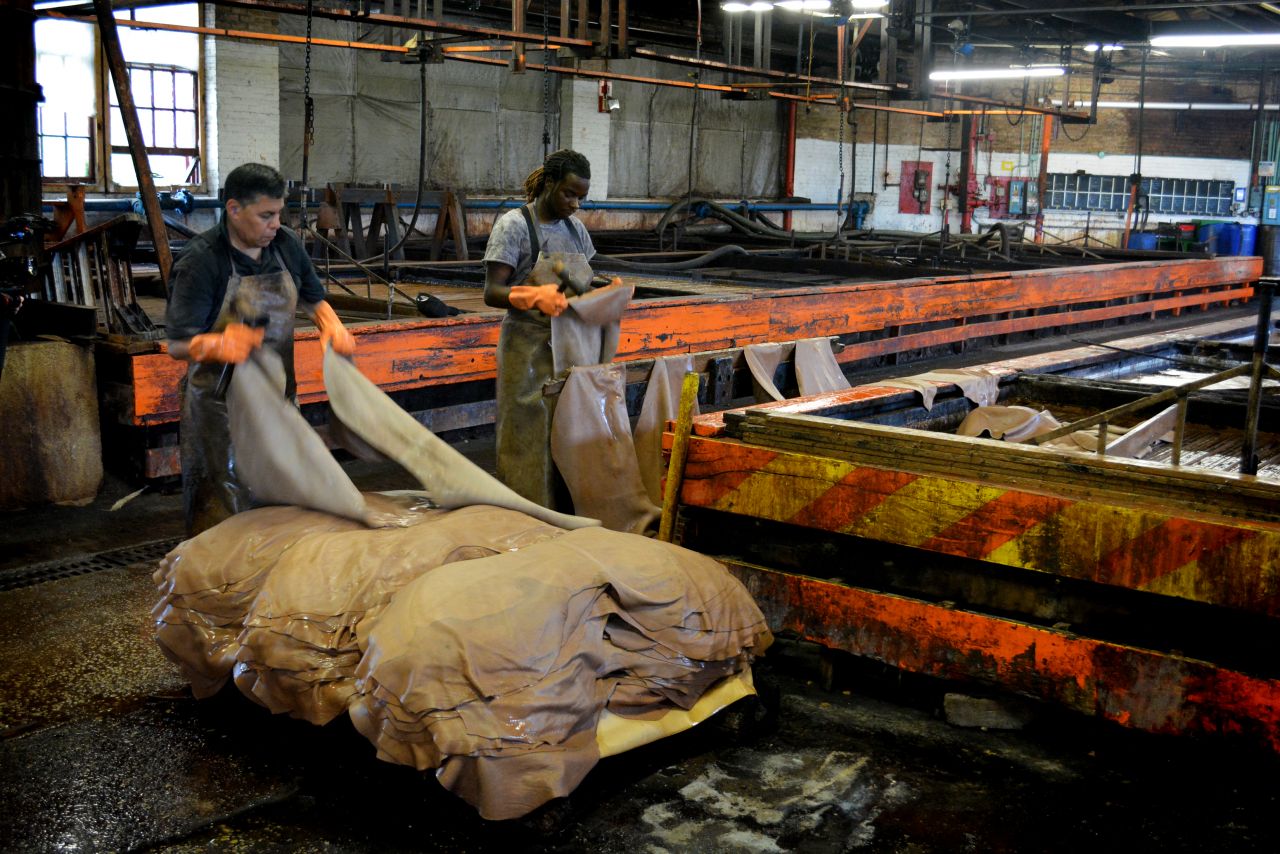
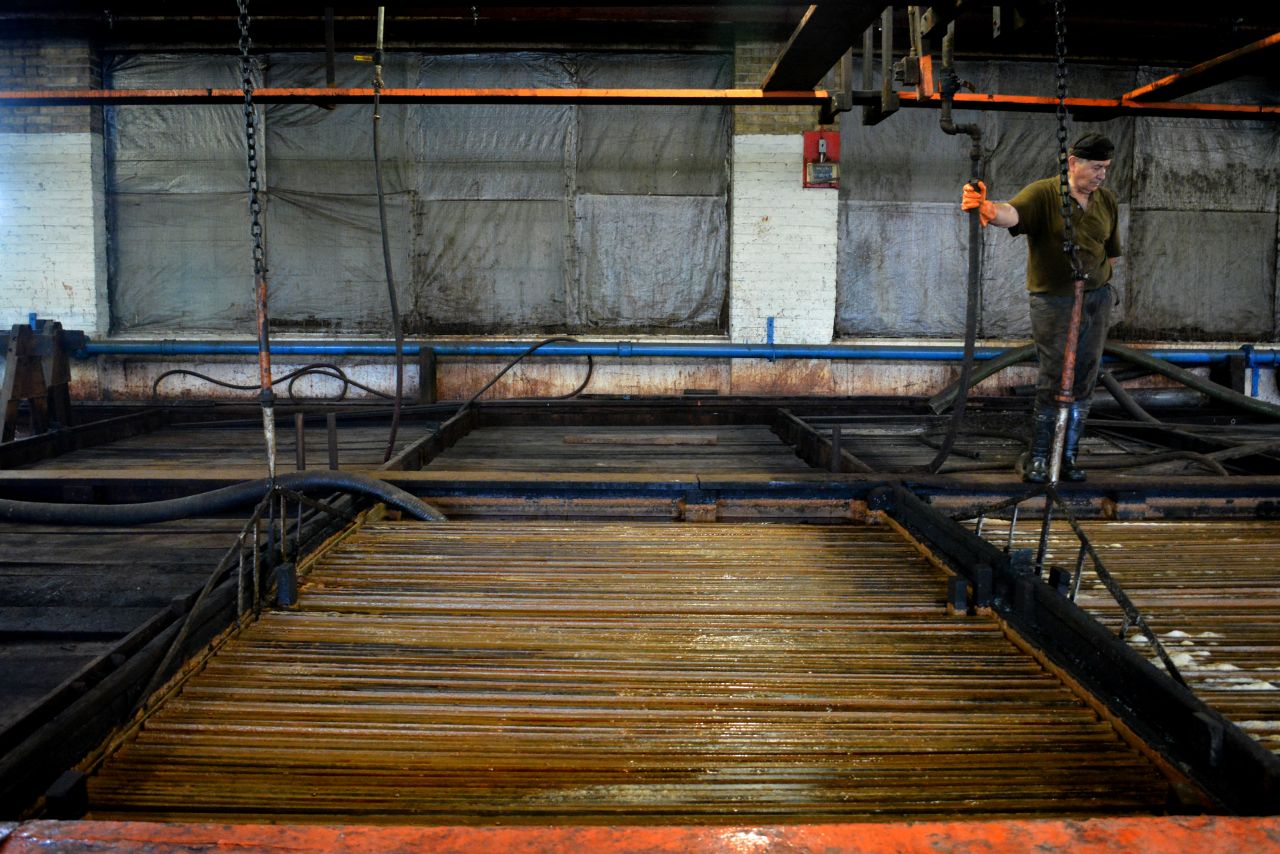
A fifth generation tanner, Nick Horween’s first job in the factory was in maintenance. “I re-tarred the roof my first summer here,” said Nick. Currently, Nick serves as the company’s Vice President.
Nick led us through the tannery—a 90,000 square foot, five-story building that stretches across the entire block of 2015 N Elston—up and down separate sets of stairs and through what seemed like over a dozen different rooms, each of which has its own purpose.
Like the tanning process itself, we started with the hair-on-hides that have been cured for transport from across the Midwest and Toronto area. “The steer hides get trimmed down the backbone and we end up with two half hides, and the horse hides get trimmed at the waist,” said Nick. “They get tanned different ways.”
“We do about 2,000 steers and 800 horse hides a week,” said Nick. “That’s tiny as far as tanneries go. Most tanneries will do that in a day.”
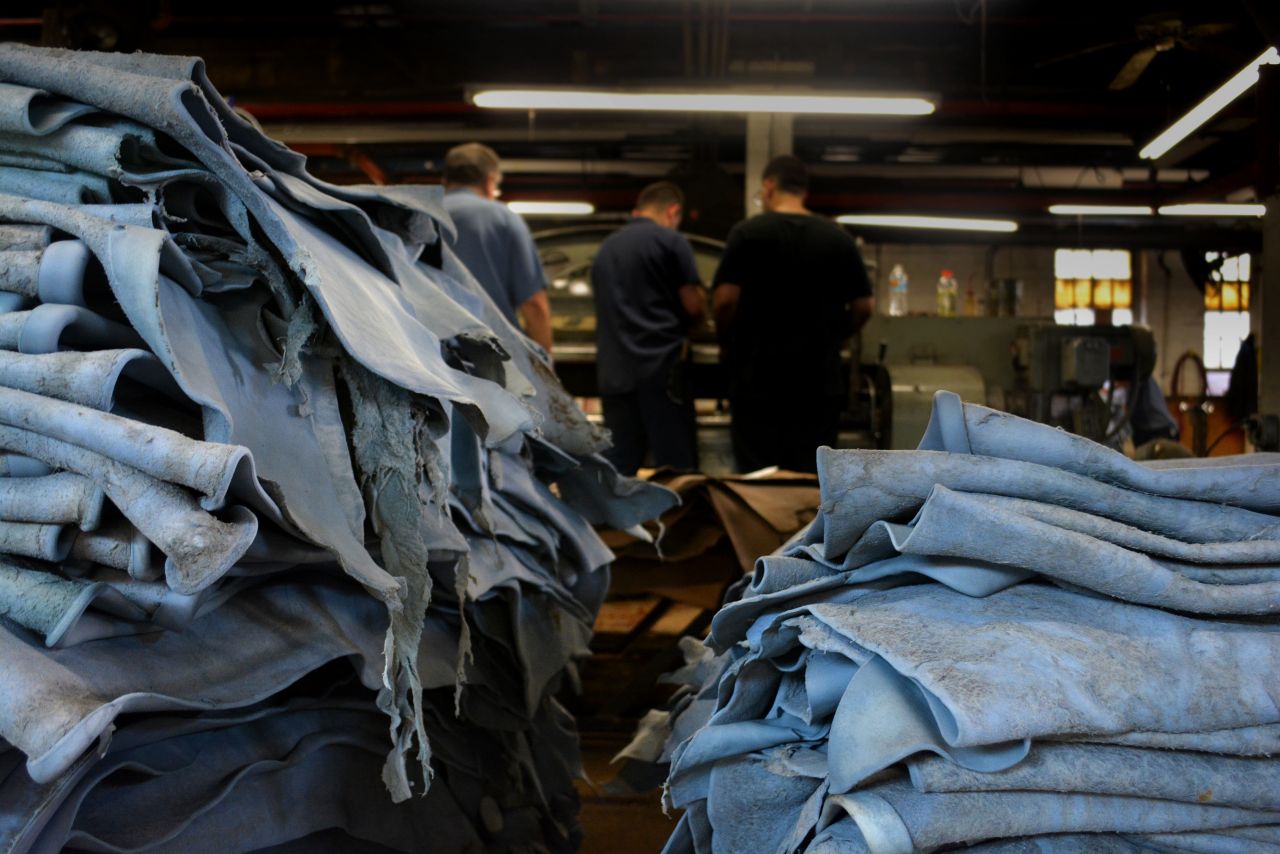

But Horween doesn’t sacrifice quality for quantity. By combining traditional techniques with carefully implemented innovations, their leathers continue to be crafted by hand, just as they were generations ago.
“The concept and the techniques are all original,” said Nick. “There have been some modifications. This [water] drum is probably five years old. There used to be just one central motor [for the pulley] that ran all the pulleys in the whole building. But we put motors in each mill to be a little more efficient.”
As the hides move on to the next steps, which include washing out the salt, introducing an acid base solution to burn off the hair, and going through a fleshing machine to remove unwanted material, Horween’s extensive processing, care, and attention to detail become even more apparent.
“No matter the hide, we look at each one, inspect it, then give it a grade,” said Nick. “We’re an industry of bi-products, so we use everything. We inspect it so we know what we can do with a hide; what sort of treatment we give it—what we do to make it as usable and consistent as possible.”
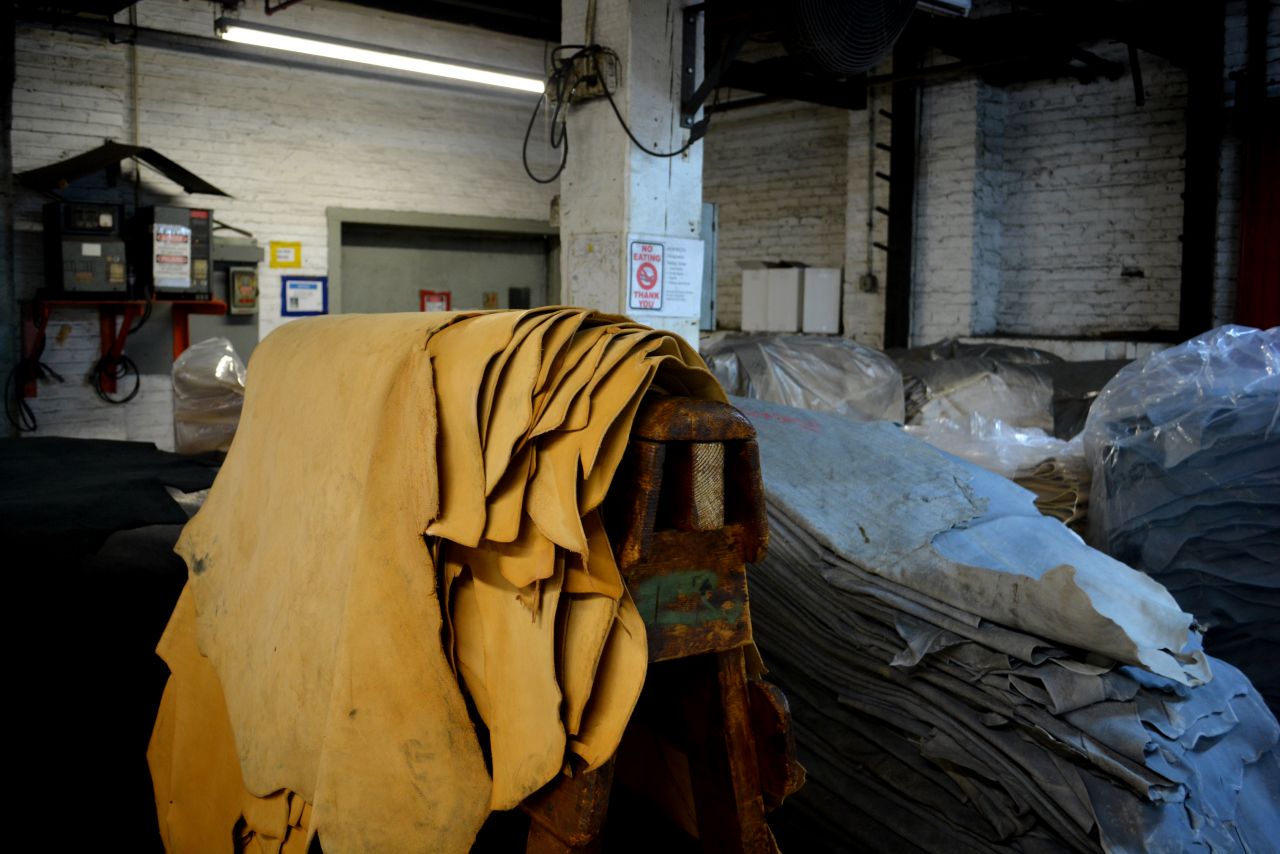

It isn’t until the re-tanning process, though, that it truly becomes their own. “We take the leather than has been tanned and preserved and we’ll add in dyes, oils, waxes, and fats that are nonperishable,” said Nick. “It reconditions the skin and gives it certain wear characteristics.”
Most often, this type of tanning is seen in footwear like those from Timberlands, Alden, Edmons, Clarke’s and New Balance--all customers of Horween.
Perhaps the most difficult job in the tannery belongs to those who work in coloring.
“Wherever we add color, if it’s upstairs or downstairs, we always have to adjust it at the end, because the product is different every time,” said Nick. “All of the color matching is done by eye. It’s probably one of the hardest jobs here, because you have this huge room of dyes, binders, emulsifiers, and you have to say, ‘I need three drops of black and two of green.’ It’s tough. It’s challenging.”
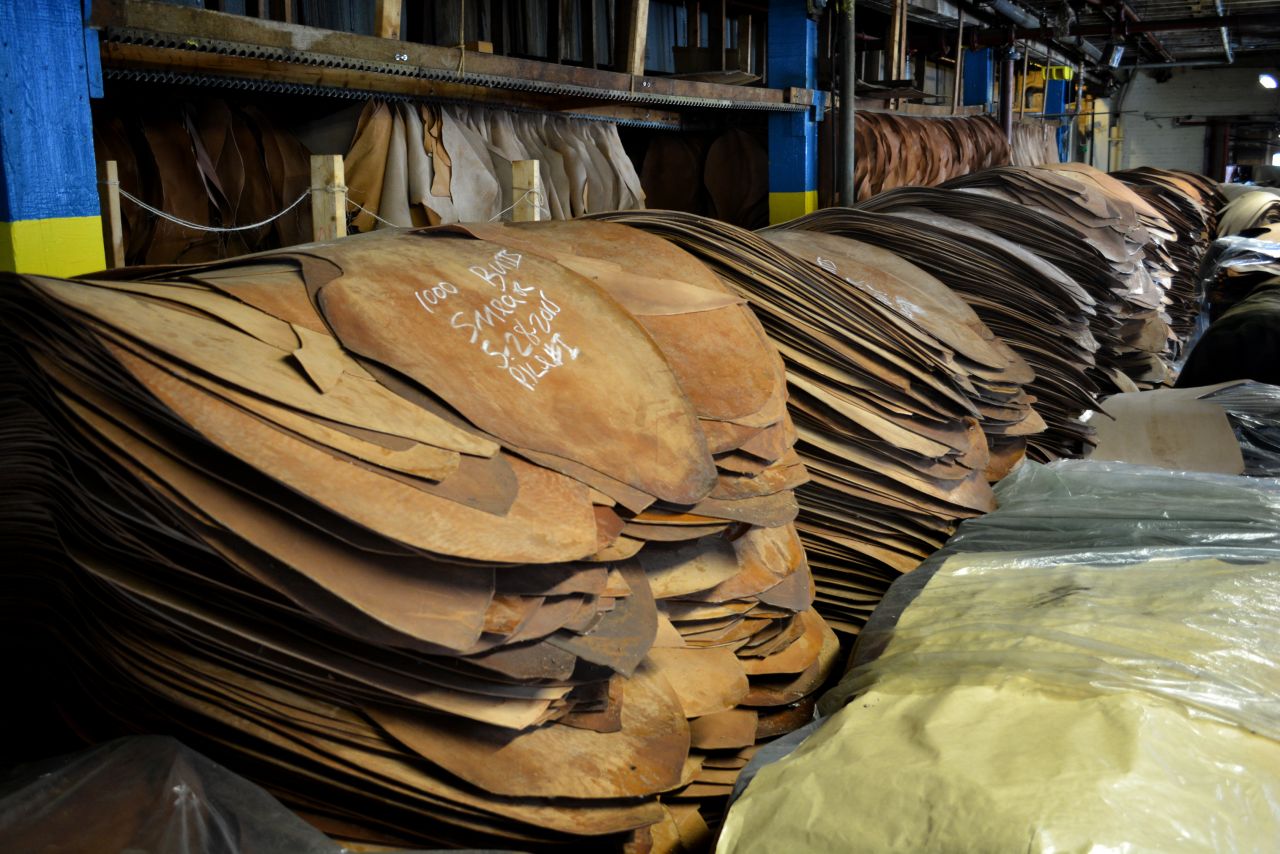
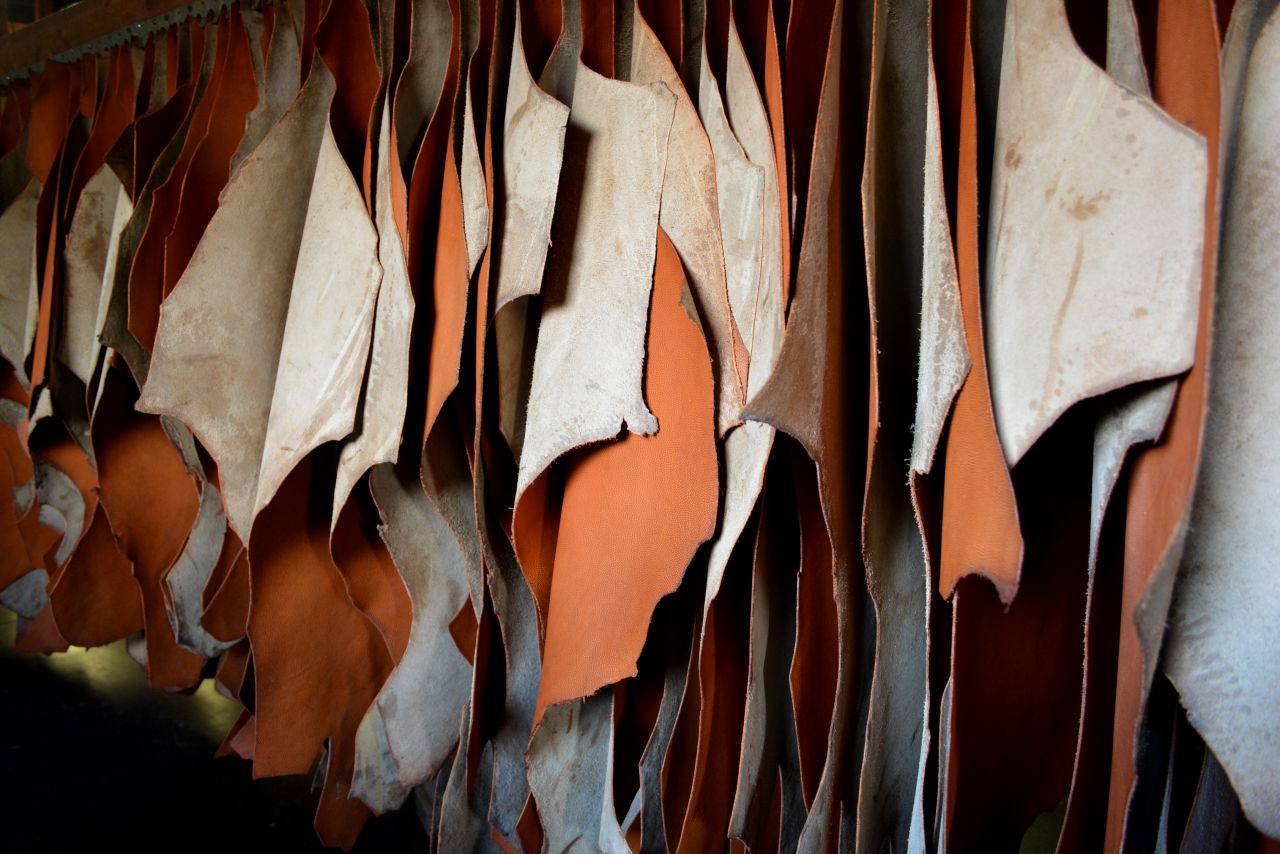
A lap around a department store will give you a sense of just how diverse the end products of Horween leather can be: from duffel bags to shoes to watches to jackets to footballs. In fact, Horween is the exclusive provider of leather for the National Football League (in which previous executives Arnold and Ralph Horween played), as well as a supplier for the National Basketball Association.
“Leather is better. For footballs, at least. Even if your hands are wet, they’ll lick the moisture away,” said Nick.
No matter the type of leather they’re working with, it’s clear that no detail is ever overlooked, and that Horween aims to build products to last.
“We put in the best possible things we can. We’re using that base to make something great, but we’re not doing any crazy effects,” said Nick. “We’re just trying to make a leather that will age really well instead of trying to have a lot going on.”